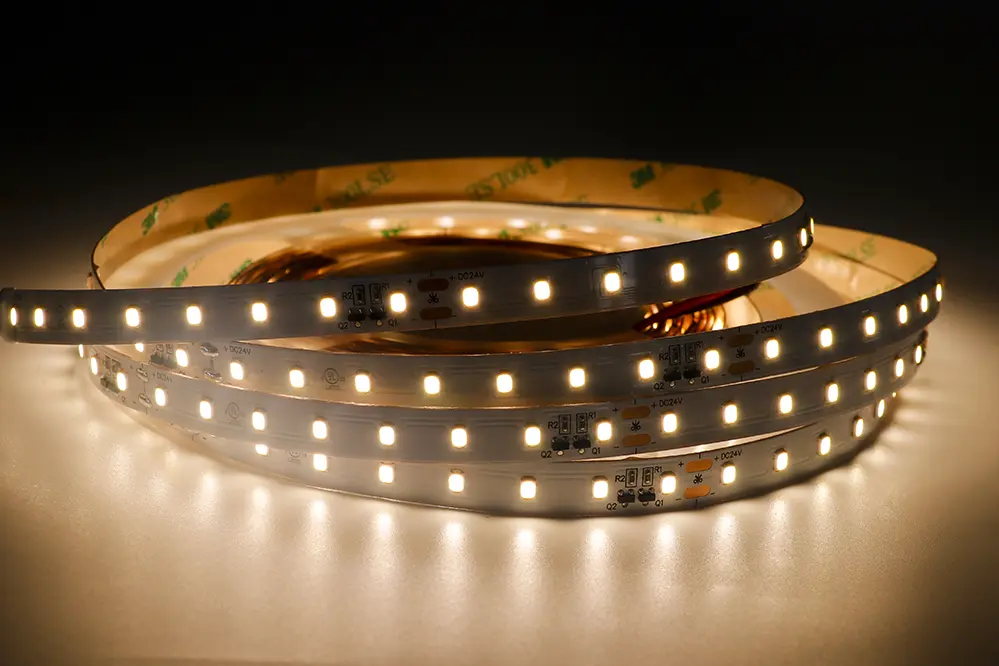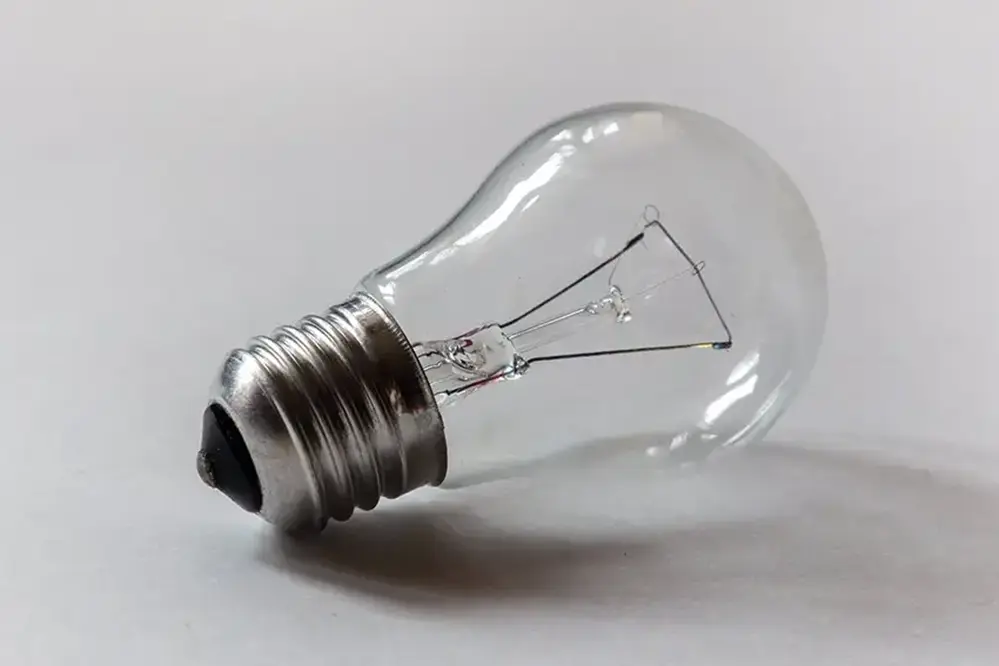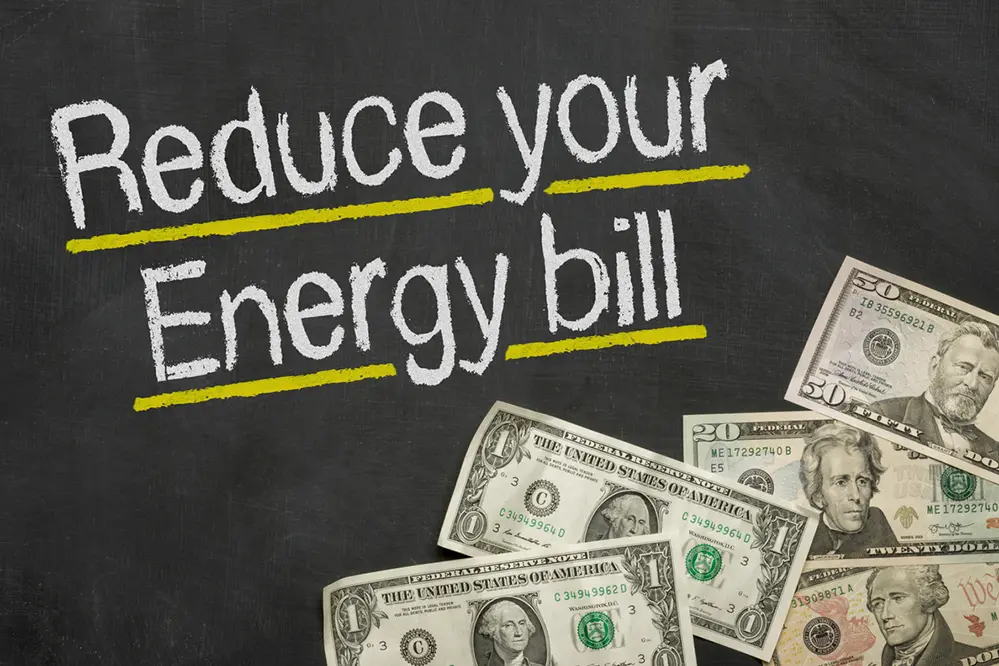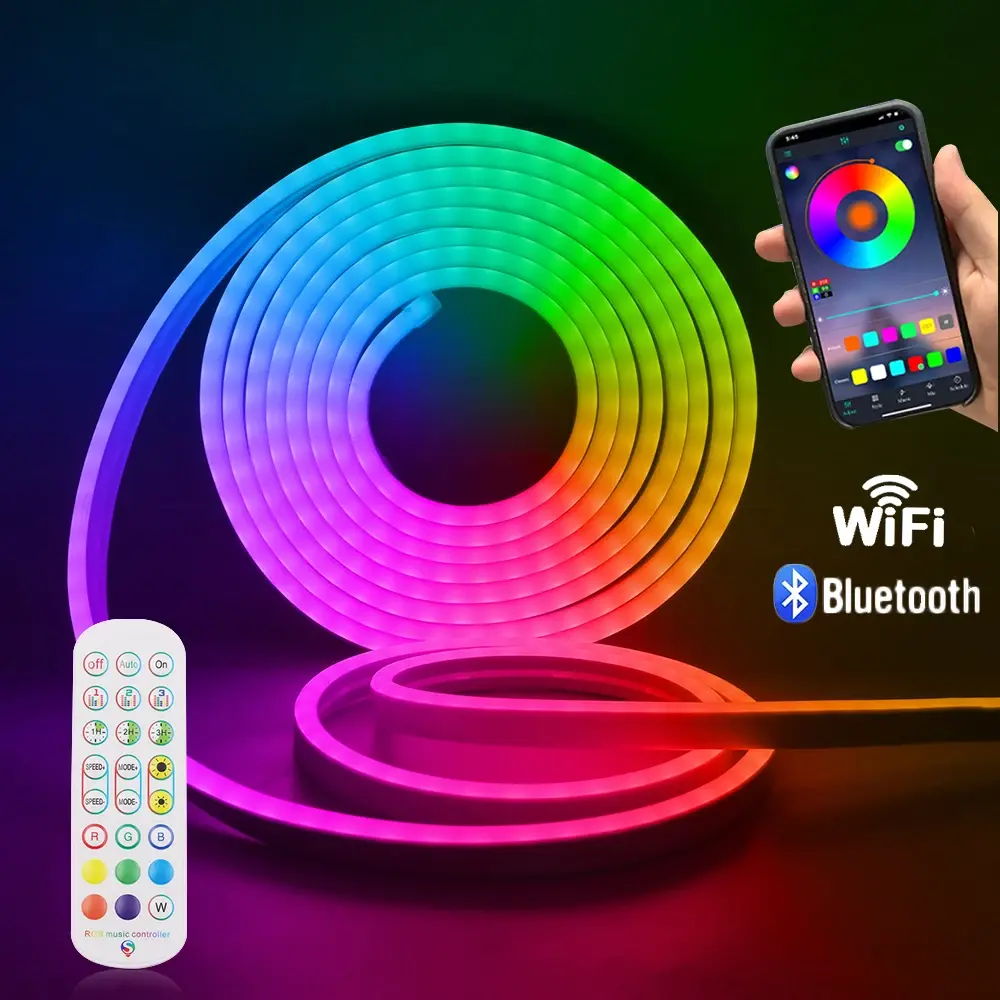Are LED Strip Lights Energy Efficient? Here's the Lowdown
- 2024-04-13 18:39
- UNITOP
Discover the truth about the energy efficiency of LED strip lights. If you're wondering whether these popular lighting options can help you save on your electric bill, you've come to the right place. In this blog post, we'll explore the ins and outs of LED strip lights and their impact on energy consumption.
LED strip lights are highly energy efficient. With their advanced technology, they consume significantly less electricity compared to traditional lighting options. LED strips use around 85% less energy, making them a cost-effective and eco-friendly choice for both residential and commercial applications.
In the following sections, we'll delve deeper into the reasons why LED strip lights are energy efficient. We'll discuss how they contribute to energy conservation, their impact on your electric bill, and the power consumption of LED strips. By the end of this post, you'll have a comprehensive understanding of the energy-saving benefits of LED strip lights. So, let's get started!
The Energy Efficiency of LED Strip Lights

LED strip lights epitomize energy conservation with their low wattage requirements per foot, compared to traditional lighting solutions. This inherent efficiency, coupled with long lifespan and reduced maintenance needs, propounds their reputation as a highly energy-conscious choice for both ambient and task lighting. The lumen output per watt, an important metric for energy efficiency, is considerably favorable when LED strips are in question, making them a prudent option for those conscious of their energy footprint.
Their negligible heat emission further underscores the energy-saving properties of LED strip lights. Less energy wasted as heat translates directly into a higher efficiency rating, ensuring that the bulk of electrical consumption is effectively converted into light, thereby augmenting their role as environmentally sustainable illuminants.
Comparing LED Strips with Traditional Lighting

LED strip lights exhibit a marked superiority in energy efficiency compared to incandescent bulbs, offering significantly reduced power consumption and operating costs.
With advancements in LED technology, these sleek, flexible lighting solutions consume less electricity for the same light output as dated halogen and fluorescent counterparts.
An LED strip can save up to 85% in energy costs compared to traditional lighting.
Not only do LED strips minimize energy usage but they also excel in longevity and performance. Delicate filaments and fragile components are obsolete—LED strips promise robust, reliable illumination with minimal maintenance.
How LED Strip Power Consumption Affects Your Bill

Understanding kWh is fundamental.
LED strip lights impact energy bills differently. They consume significantly less power than traditional lighting sources, which means they contribute to lower electricity costs. However, energy efficiency levels vary depending on strip quality, brightness, and usage patterns. Thus, customers can predict savings when switching but should note that extended operation could counteract this.
LED strips typically save on bills.
Despite lower consumption, overuse can affect savings. When LED strips run extensively - beyond typical use cases - they continue to consume energy, albeit at a lower rate than incandescent bulbs. It's an example of the energy-saving paradox: using low-energy devices excessively can lead to higher overall consumption.
Routine use means lower costs.
Factoring in the average usage patterns and the efficiency standards of LED strip lights—assuming adherence to manufacturer recommendations—is imperative for realizing the potential savings on the electric bill. Recent studies show a steady rise in energy-efficient lighting adoption across residential and commercial sectors, affirming the long-term cost benefits and bolstering the demand for LED solutions.
LED Strips and Electricity Use
LED strips are revered for their energy-efficient profile.
In terms of wattage, sophisticated LED technology ensures that these strips consume significantly less electricity than traditional lighting solutions, translating into notable reductions on energy bills. Moreover, the versatile nature of LED strip lighting enables precise energy management through dimmers and sensors, thereby enhancing their efficiency credentials further.
Yet, it’s the strategic application that dictates true efficiency.
Decoding Watts and Lumens in LED Strips
Understanding the energy consumption of LED strips hinges on two pivotal metrics: watts and lumens.
- Watts measure the power usage of the LED strip, importantly indicating the energy demand.
- Lumens quantify the light output, revealing how much illumination the strip provides.
- Efficiency is then deduced by the lumen-to-watt ratio, higher ratios signifying superior energy efficiency.
- Application aligns the required lumens with the minimal watts, capitalizing on tailored lighting solutions.
Choosing LED strips with high lumen output and low wattage maximizes energy efficiency.
Optimized usage, which includes selective lighting and dimmable controls, further enhances energy conservation.
Impact of Voltage and Length on Power Usage
Voltage stability across an LED strip is pivotal, for voltage drops lead to inconsistent brightness and can cause increased power consumption at certain points.
As LEDs operate at low voltages, typically 12V or 24V, using a power supply that converts high-voltage grid power is essential. Longer strips might experience voltage drop, which not only affects luminance but can precipitate an uptick in energy consumption due to compensatory measures, like using additional power supplies.
Conversely, shorter LED strip segments maintain voltage consistency more readily. This results in a more uniform light output and mitigates unnecessary power usage that can arise from overcompensating for voltage drops in longer strips.
The impact of strip length is contingent upon the use of parallel wiring circuits. When strategically implemented in long installations, they can alleviate voltage drop issues and enhance energy efficiency. This approach ensures each section receives an optimal voltage, thus precluding the need for excessive power to maintain brightness uniformity.
Maximizing Energy Savings with LED Strips

LED strip lights are revered for their energy-efficient credentials, leveraging advanced technology to minimize wattage without compromising output. This inherent efficiency translates to substantial savings on electricity bills when compared to traditional incandescent or even compact fluorescent lighting.
To fully harness their potential, proper installation is paramount. This includes optimizing strip length and avoiding excessive overlapping, which could lead to redundant energy consumption. Additionally, integrating dimmers and controllers can regulate brightness and operational periods, further cutting down on energy use.
Selecting a high efficacy LED strip, marked by luminous efficiency per watt, is crucial. This ensures that even at a reduced wattage, the light output remains potent, embodying the epitome of energy conservation in modern lighting design.
Smart Usage Practices for LED Lighting
Opt for LED strips with smart control capabilities.
Such strips feature programmable settings conducive to energy savings. They allow for scheduling, dimming, and motion activation, effectively tailoring lighting to actual usage needs. Subsequently, this obviates the need for manual intervention and ensures that lights operate only when required, substantially diminishing unnecessary energy expenditure.
Use high-quality LED strips for optimal performance.
Integrating sensors augments energy efficiency significantly.
Consider fixtures that diffuse light effectively - a strategy that ensures even distribution of illumination. This means fewer LED strips may be needed, which in turn reduces the overall power consumption. It's a harmonious blend of strategic lighting design and energy-saving technology that, particularly since 2023, has become the benchmark in efficacious lighting practices.
Ensure regular maintenance to sustain efficiency and longevity. Dust and dirt accumulation can impede LED performance, necessitating higher power to achieve the same brightness. Therefore, periodic cleaning is pivotal in preserving the optimal function of LED strip lights, further substantiating their role as an eco-friendly lighting solution in modern environments.
Choosing the Right LED Strip for Energy Conservation
To maximize energy efficiency, opt for LED strips with a high lumen-to-watt ratio. These deliver brighter light output per unit of electricity consumed, ensuring a greater efficacy of your lighting installation.
Select LED strips designated as Energy Star rated. These products meet strict energy efficiency guidelines set by the EPA.
Moreover, choose strips with adjustable brightness intensity. Dimmable LEDs (incorporating pulse-width modulation dimming technology) conserve energy by reducing brightness when full output is not necessary.
Consider LED strips with a longer life expectancy. Greater longevity correlates with less frequent replacements and, indirectly, with reduced energy consumed in manufacturing and transportation.
Higher initial costs for premium LED strip lights may yield long-term savings by offering greater durability and energy efficiency. An investment in superior quality now can mean lower electrical bills and fewer resource demands in the future.
Finally, always verify a product's technical specifications to ensure its efficacy. For example, examine lumens per foot and power draw per meter to accurately assess how much energy the LED strips will consume.
LED Strip Lifespan and Environmental Benefits

The remarkable longevity of LED strip lights is a testament to their environmental stewardship. Boasting lifespans that can extend up to 50,000 hours or more, these luminaries greatly reduce the cycle of production, consumption, and disposal that traditional lighting methods frequently invoke. This extended duration not only conserves resources by diminishing the need for replacements, but also implicates a sustained reduction in the aggregate energy demand over the lifetime of the product. Coupled with the fact that LED strips emit little to no heat and contain no hazardous substances like mercury, their environmental impact is markedly less adverse compared to their incandescent or fluorescent counterparts.
Longevity and Maintenance of LED Strips
LED strips surpass traditional lighting in longevity.
A quintessential feature of LED strip lights is their impressive lifespan, which generally ranges from 25,000 to 50,000 hours. This translates into years of continuous operation before necessitating replacement. The longevity is attributed to the small size of LEDs and their ability to efficiently manage heat—a critical determinant in the operational life of semiconductor-based devices. Conversely, traditional bulbs succumb to wear more rapidly, necessitating frequent replacements.
Maintenance becomes considerably less demanding with LED strips.
Properly installed LED strips infrequently require maintenance, if at all. The absence of filaments or glass components in their design mitigates the risk of breakage and functional decline over time. Therefore, they represent a steadfast asset in both commercial and residential settings, attributing to minimal maintenance needs and associated costs.
Safeguards are essential to uphold the longevity of LED strips.
To ensure the extended lifespan of LED strip lighting is realized, attention to installation conditions is pivotal. This includes avoiding excessive bending, proper thermal management through quality heat dissipation materials, and protection from moisture ingress if used in humid environments. Adherence to these guidelines secures the investment and prolongs the functional utility of LED strips.
LED Lights and Their Role in Sustainable Lighting
LED lights are at the forefront of energy-efficient lighting technology, offering substantial power savings.
- Longevity: LED strip lights last significantly longer than traditional bulbs, reducing waste and replacement frequency.
- Low Power Consumption: LEDs require less electricity, translating into lower energy bills and diminished environmental impact.
- Reduced Heat Emission: They emit minimal heat, decreasing the need for cooling in illuminated spaces and conserving energy.
- Recyclability: Many LED components are recyclable, contributing to reduced landfill waste.
- Versatility: Their adaptability allows for creativity in energy-efficient lighting designs without sacrificing performance or quality.
Considering their energy requirements, LED strips generally consume less electricity, contributing to a greener footprint.
The integration of LED technology into strip lighting merges aesthetic versatility with ecological responsibility, enabling a sustainable lighting solution.
FAQs
Does LED strips use a lot of electricity?
LED strips are known for their energy efficiency, consuming much less electricity compared to traditional lighting options. This is due to the use of light-emitting diodes (LEDs), which are highly efficient in converting energy into light. Therefore, LED strips use significantly less electricity than other types of lighting fixtures.
When it comes to power consumption, LED strips have a low wattage requirement. This means that they consume a relatively small amount of electricity to produce a desired level of illumination. This makes them a cost-effective choice for homeowners and businesses looking to reduce their energy consumption and lower their electricity bills.
In addition to their low power consumption, LED strips also have a longer lifespan compared to other lighting options. LED technology is known for its durability and longevity, allowing LED strips to last for many years without needing frequent replacements. This not only reduces the energy used for manufacturing and disposal of lighting fixtures but also further contributes to energy savings in the long run.
Overall, LED strips are a great option for those looking to minimize energy consumption without compromising on the quality of lighting. With their energy efficiency and long lifespan, LED strips can help reduce electricity usage and promote sustainable lighting practices.
How much energy will LED strip lights save comparing with traditional incandescent bulbs?
LED strip lights can save a significant amount of energy compared to traditional incandescent bulbs. In fact, LED strips use around 85% less energy, making them a highly efficient lighting option. This energy-saving feature not only helps reduce your electricity bill but also contributes to a more sustainable and eco-friendly environment. So, by switching to LED strip lights, you can enjoy the same level of brightness while saving on energy consumption.
Are a strip of LED lights expensive to run?
LED strip lights are generally not expensive to run. Compared to traditional incandescent or fluorescent lights, LED lights are much more energy-efficient. LEDs consume significantly less electricity while providing high-quality illumination.
The cost of running a strip of LED lights depends on a few factors. Firstly, the wattage of the LED strip. Higher wattage LED strips will consume more electricity and, consequently, be costlier to run. Secondly, the length of the LED strip. The longer the strip, the more lights there are and the more electricity they will consume. Additionally, the number of hours the lights are used per day will also impact the cost of running them.
Fortunately, LED lights are known for their energy efficiency. They are designed to convert a higher percentage of electricity into light, rather than producing heat like traditional bulbs. This energy efficiency not only results in lower electricity bills but also contributes to the environmental sustainability of LED lights.
In summary, while the exact cost of running a strip of LED lights will depend on factors such as wattage, length, and usage, LED lights are generally cost-effective and energy-efficient compared to other lighting options.
What are the disadvantages of LED light strips?
LED light strips have several disadvantages that should be considered before deciding to use them. Firstly, one disadvantage is that LED light strips can be more expensive upfront compared to other lighting options. This initial cost can deter some individuals who are on a tight budget or looking for a more affordable lighting solution.
Additionally, LED light strips can produce a higher amount of heat compared to other types of lighting. This can lead to potential safety concerns, especially if the LED light strips are installed in enclosed spaces or near flammable materials. It is important to ensure proper ventilation and heat dissipation to prevent overheating and potential fire hazards.
Another disadvantage of LED light strips is that they can be more prone to damage or malfunction. Since they are made up of multiple individual LEDs, if one LED fails, it can affect the overall functionality of the strip. This means that regular maintenance and replacement of faulty LEDs may be required, adding to the overall maintenance cost and effort.
Furthermore, LED light strips may not always provide uniform lighting. Due to the arrangement of the individual LEDs, there can be inconsistencies in brightness and color temperature along the strip. It is important to carefully choose the right type and quality of LED light strips to ensure desired lighting effects and avoid any discrepancies.
In conclusion, while LED light strips offer many advantages, such as energy efficiency and versatility, they also come with some disadvantages that should be considered. These include the higher upfront cost, potential safety concerns related to heat generation, the need for regular maintenance, and the possibility of non-uniform lighting. It is essential to weigh these disadvantages against the benefits to make an informed decision when using LED light strips.
P.S.: You can read: Disadvantages of LED Strip Lights: Unveiling the Lesser-Known Truths
Should I switch to LED strip lighting?
LED strip lighting is a great choice for both enthusiasts and professionals in the lighting industry. With its versatility, energy efficiency, and longevity, it provides numerous benefits that make it worth considering.
LED strip lighting offers a wide range of design options and can be easily customized to fit any space. Whether you want to create an ambient glow, accentuate architectural features, or add a pop of color, LED strips can help you achieve the desired effect. Additionally, they come in various lengths, colors, and brightness levels, allowing you to tailor the lighting to your specific needs.
One of the key advantages of LED strip lighting is its energy efficiency. LEDs consume significantly less electricity compared to traditional lighting sources, such as incandescent or fluorescent bulbs. This not only results in lower energy bills but also reduces your carbon footprint. LED strips are an environmentally friendly choice that can make a noticeable difference in your energy usage.
Moreover, LED strip lighting is built to last. LEDs have a much longer lifespan compared to other lighting technologies, which means you won't have to replace them as frequently. This durability translates into cost savings in the long run, as you'll spend less on maintenance and replacement bulbs.
If you're considering switching to LED strip lighting, now is a great time to do so. The technology has seen significant advancements in recent years, resulting in improved performance and affordability. Additionally, there are numerous government incentives and rebates available that can help offset the initial cost of installation.
In conclusion, LED strip lighting offers a multitude of benefits, including versatility, energy efficiency, longevity, and cost savings. Whether you're looking to enhance the lighting in your home or take on a professional lighting project, LED strips are a reliable and effective choice. Make the switch and enjoy the many advantages that LED strip lighting has to offer.
Conclusion
In essence, LED strip lights exemplify energy efficiency in modern lighting applications, reducing the overall electrical footprint.
They represent a prudent choice for cost-conscious users prioritizing sustainability.
While individual usage will vary, adopting LED strip lighting consistently results in a reduction of energy consumption, hence a decrease in electricity bills, demonstrating both an ecological and economical benefit.
The decision to incorporate LED strips should be viewed as an investment in energy conservation, aligning with contemporary environmental values. As lighting technology advances, the efficiency of LED strips is expected to improve further, reinforcing their position as a linchpin in the movement towards greener living. Embracing LED strip lighting is synonymous with embracing a future where energy efficiency is not just idealized; it is realized.
If you're looking for high-quality LED strip lights that are not only energy efficient but also reliable and durable, consider reaching out to Unitop. As a professional manufacturer of LED strip lights and LED neon strips in China, Unitop offers a wide range of options to suit your lighting needs. Their expertise and attention to detail ensure that you'll receive top-notch products that meet the highest standards. Don't hesitate to contact Unitop today to explore their extensive selection of LED strip lights and take the first step towards a more energy-efficient and environmentally-friendly lighting solution.
